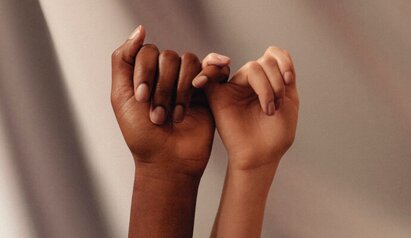What It Takes to Be a Culturally Responsive Therapist


Published September 15, 2020

What if I told you that it’s actually quite common for people to seek help for only one or two reasons? This may be hard to reconcile when the official number of recognized mental disorders is in the hundreds. You might say that any number of complex issues can produce real problems that hinder functioning on a daily basis. And you’d be right to point all that out.
But people come looking for answers to one central question: “What does it mean to be human?” What does it mean to be a human being—filled with failures, desires, agency, the capacity to be cruel and compassionate? How do we make sense of our ability to make choices that ripple out and impact everything around us?
That’s the central, universal struggle many people go through, and it’s hard to navigate alone.
It takes stumbling around in the dark to wrestle with these questions. We’re not born with a guidebook that points out what our purpose here on Earth is. We have to discover that on our own, which means we must make mistakes. We must fail. We must experience immense pain and loss. These are givens of the human experience.
But life isn’t all pain. That stumble in the dark comes along with flashes of fire that illuminates ourselves and others in remarkable ways. We can learn to carry and sustain that fire with us as we move forward in life. When people feel lost and seek guidance, they’re really looking for help carrying their pain, and finding the right path forward.
These two objectives are central to the therapeutic process. Although there’ll always be painful moments in life, there’ll also be ways to move through that pain. Both are necessary to grow. The practitioner’s role is to help people make sense of the challenges they face and write a story of their lives that feels genuine. In therapeutic practice, this can be referred to as the “self story.”

A self story is a reason for being. It’s a set of values that’s authentic to an individual. It also serves as a guide for the kind of person they want to be. The self story can be split into two integral parts: the relationship a person has with themselves, and the relationship they have with others.
Learning how to handle pain and hardship requires a clear “why”—a coherent self story that gives us a reason to persevere. This requires an acceptance of the pain of life, which in turn, gives that individual the ability to navigate that pain.
A relationship forms early on between two parts of the self—the self as observer of life, and the self as participant in life. This means that the choices we make throughout our lives can be deemed worthy or unworthy, broken or whole, criticized or praised—all from within. In essence, we can become our own worst enemies.
It’s critical to identify this part of the self story and assess how it’s functioning. Self stories of “I’m broken,” “I’m weak,” and “I’m worthless” aren’t conducive to a sustainable and healthy life. Therapeutic work on this part of the self story involves helping your clients craft a new and more compassionate narrative that’ll serve as an anchor for future actions.
The Hindu sage Ramana Maharshi was once asked “How are we to treat others?” His reply: “There are no others.” As the self story develops, we quickly realize that we’re not islands alone in the world. Our actions affect the people around us. Everyone we encounter is another complete human being struggling with that same question of what it means to “be.”
While I like to think that our default is to treat others with kindness and compassion, the self story in relation to others can often become twisted into “others are dangerous,” “others are enemies,” and “others are unlike me.” We’ve seen the effects of this type of relating throughout history. When we view others as separate, foreign, or threats to ourselves, the results are always harmful.
As practitioners, we have to help our clients craft more prosocial relationships to others. We must also help shape a more inclusive self story that captures the fact that we’re all in this together—that we are, in the words of Maya Angelou, “more alike, my friends, than we are unalike.”

Jacob Martinez, MA, LPC, practices Acceptance & Commitment Therapy (ACT). He is an active member of the Association for Contextual Behavioral Science (ACBS), and the past president of the Texas Chapter of ACBS.
Proudly made in Santa Monica, CA © 2025 SimplePractice, LLC
Proudly made in Santa Monica, CA © 2025
SimplePractice, LLC